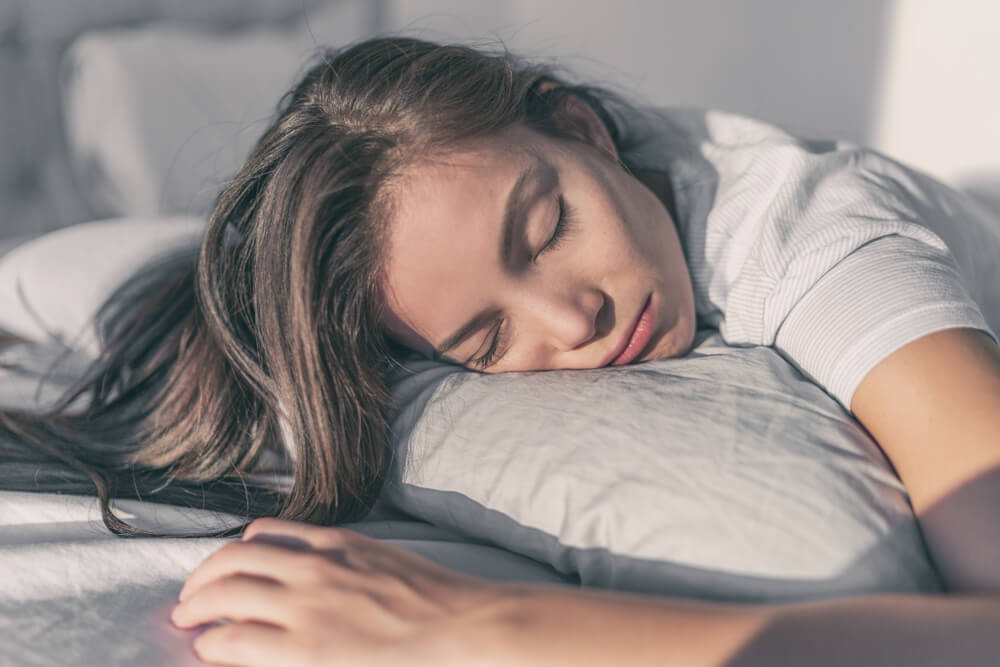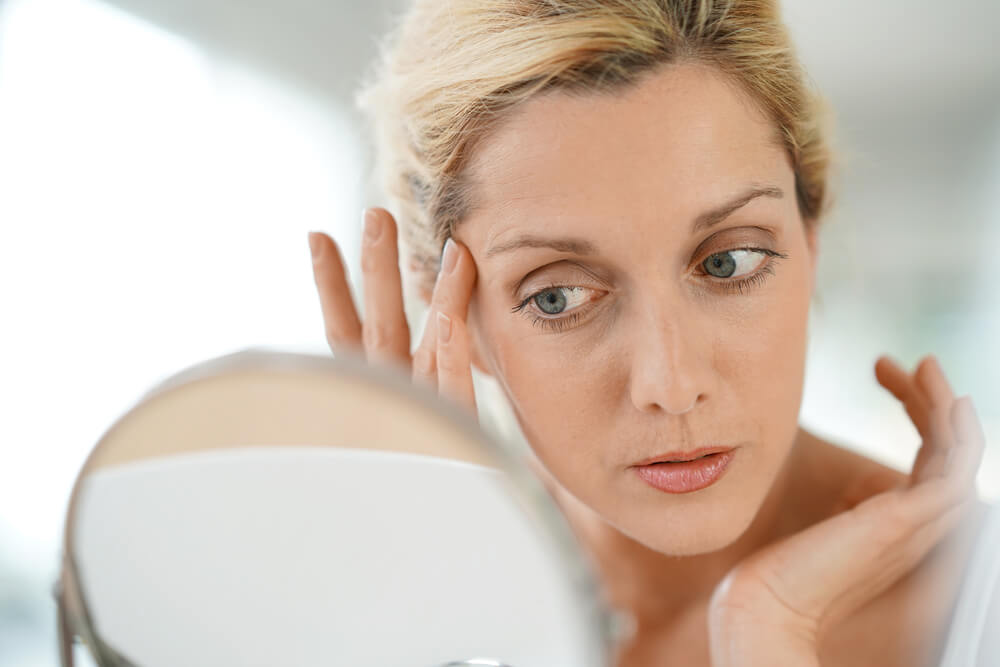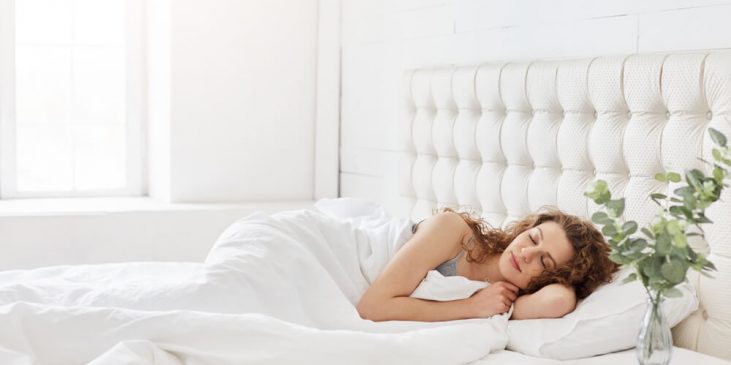We often call sleep “beauty rest.” But believe it or not, sleep can also cause wrinkles! This might be shocking, but it is, sadly, the truth.
Sleep wrinkles, also called sleep lines, are caused by repetitive stress on your face. Unlike other types of wrinkles, sleep lines are less of a concern but are just as distressing. While the jury’s still out and researchers are still studying about it, one thing is for sure…
The problem isn’t about how long you sleep every day. Instead, it’s about how you sleep — your sleeping position, sleepwear, and even age.
Luckily, like any other skin problem, sleep wrinkles can be treated and have possible solutions and precautions. In this article, you’ll find everything you need to know about sleep wrinkles, from their causes to things you can do to solve them.
Sleep Wrinkles: What Are They?

Wrinkles are either static or dynamic.
Dynamic wrinkles result from overuse and movement. Sleep wrinkles, along with facial expression wrinkles, fall under this category. On the other hand, overexposure to the sun and gravity can cause static wrinkles.
Sleep lines are also very different from the more common types of wrinkles, such as:
- Atrophic wrinkles
- Expressional wrinkles
- Gravitational wrinkles
- Elastotic wrinkles from solar elastosis
While different, sleep lines can be just as stressful. In some cases, they can even be more of a hassle to treat because they don’t respond well to Botox and the usual wrinkle treatments. However, thanks to recent findings and studies, we’re learning more about sleep wrinkles every day.
Unlike natural wrinkles from moving your face, sleep lines are vertical. Sleep wrinkles are commonly found around the lips and on the sides of your nose and forehead. Because they don’t follow the change in your facial expressions, they stick out like a sore thumb.
The question now is: if they don’t follow the movements of your face, what causes them?
Wrinkles and Sleeping Habits
Simply put, sleep wrinkles form due to skin distortion during long periods of sleep! You shouldn’t confuse them with sleep marks, which are also very different. You can find those anywhere on your body.
People who sleep on their side or their belly are more likely to develop sleep wrinkles. Various forces affect your skin when you are asleep. As a result, the way you sleep can influence how easily they form. The three forces that act in different directions are as follows:
- Tension
- Compression
- Shear
The base force exerted by the pillow on your face is called tension. The side of your face that isn’t on the pillow has its own weight that it exerts on the lower side while you’re sleeping.
The upper side applies pressure because of gravity, which is called compression force.
Last is the shear force, which your face experiences when it switches from side to side on your pillow. The more you toss and turn in bed, the more these forces act on your skin.
Besides sleeping habits, other factors, such as age, also play a significant role in forming sleep wrinkles.

Sleep Wrinkles and Age
The connection between age and wrinkles might be common knowledge to you by now. If you don’t remember, your skin’s elasticity, or its ability to snap back to its natural state, decreases as you age. As it loses its elasticity, it also grows thinner and weaker. When combined, marks and wrinkles on people who are older in age may be permanent.
Additionally, studies show that you shift more in bed as you age While you’re still young you may only shift positions 17-20 times every night. However, this number may increase to 27 or more with age. The more you move around; the more forces push on to your face.
So, combining low elasticity with the increase in facial forces, sleep wrinkles can permanently affect older adults.
And let’s face it, everyone grows old!
It’s a reality you can’t escape. While no one is safe from these harsh realities, there are ways to minimize their effects.
Lifestyle Changes to Avoid Sleep Wrinkles

When people think of fixing skin problems, cosmetic procedures might be first on their minds. You wouldn’t be wrong, but lifestyle changes should be considered first to fix and minimize sleep lines.`
Fix Your Sleeping Pattern
According to a New York plastic surgeon, Dr. Vasyukevich, constant facial expansion and contraction can eventually lead to sagging skin. So, although you can fix facial distortion upon waking up, there may be long-term effects.
A recent study has findings that can shed light on the long-term effects of facial distortion on skin aging. So, younger people should also practice healthy sleeping habits early on to avoid developing sleep wrinkles.
Here are sleeping positions that make you more prone to sleep wrinkles and why you should avoid them:
- Sleeping on your stomach can worsen frown lines in your eyes and lips
- Sleeping on your side increases friction on the affected area
- Sleeping with your hands pressed to your face
If you have other conditions, such as sinusitis and sleep apnea, consider sleeping on your back. If sleeping on your side is better for your breathing, you should try changing your pillow.
Switch to Proper Sleepwear
Although sleep is more of a need than a luxury, you should be more self-indulgent. Opting for satin or silk pillowcases can reduce sleep wrinkles because there’s less friction against your face.
If you can’t sleep on your back because you want to block out light and protect your eyes, try eye masks. These luxury sleepwear accessories have other benefits, too! They help improve overall sleep, prevent eye puffiness, and lighten migraines.
If you sleep better with some pressure on your face, weighted sleep masks are an option you can try. Besides, weighted sleep masks are also useful for those with sleep disorders.
But before buying sleepwear, remember:
Silk, satin, and other frictionless materials are the perfect cloth for your sleepwear and accessories.
Eat Healthily

Another way to reduce the effects of aging on your skin is by having a healthy diet. Antioxidants like berries, tea, and beans should be a mainstay in your diet because they slow down natural cell degradation. Try avoiding sugary and boozy foods, as these can accelerate aging.
Use Facial Masks
You can also use overnight facial masks, such as the Lumi-Cell Overnight Mask. Facial masks like these enhance your skin’s smooth appearance even as you sleep.
And the best thing about having something on your face while you sleep?
It can add to your motivation to sleep on your back!
Massage Your Skin
When you wake up, you should also massage your skin to facilitate proper blood circulation. Good blood circulation is key for the skin to cleanse itself of toxins like oxidizing agents.
Massaging your skin can also help retain skin elasticity, and even speeds up the process of bringing back your normal skin orientation.
Don’t Forget Proper Skin Care!
Of course, taking care of your skin requires the best skincare regimen. As they say, prevention is better than cure. As early as you can, make sure to quit all the poor skin habits you may have. Make these excellent and healthy skin care practices a part of your routine instead.
Always wear SPF sunscreen, even if you’re spending your time inside buildings with lots of windows. While glass blocks out UVB rays, UVA light can still pass through it and cause damage to your skin. For casual, everyday use, use at least SPF 30.
Don’t forget to add moisturizing creams and serums to your skincare regime. Introstem’s Stem Cell Night Serum works great! You could also try Introstem’s Hydro Face and Neck Cream for your moisturizer needs. With these skincare essentials, you’ll keep your skin looking as healthy and fresh as ever.
Cosmetic Treatments For Sleep Wrinkles
Even with all our suggestions so far, you might still get sleep wrinkles. As mentioned earlier, Botox treatments just don’t work well with them. However, it doesn’t mean there are no cosmetic treatments for sleep wrinkles. You can still look into some procedures like face lifting, fillers, and laser resurfacing.
Laser Resurfacing

Laser resurfacing is most useful for people with minor facial flaws. There are two types of laser resurfacing, both of which stimulate collagen production. Ablative laser, an invasive procedure, can help reduce the appearance of dark spots, wrinkles, and even scars.
On the other hand, the nonablative laser is noninvasive. It also helps even out your skin but can be less effective than ablative laser procedures. However, both these treatments can’t treat and remove overly saggy skin.
Possible side effects of laser resurfacing include changes in skin color, swelling, and infection. So, if you have immune system disorders or are prone to colds and viruses that infect the skin, you should find other treatment procedures.
Facial Lift
Your next option is a facial lift, a cosmetic procedure for tightening loose skin in the face and neck. Unfortunately, it isn’t as beneficial for deeper wrinkles, skin irregularity, and sun damage. Thus, you can pair facial lifts with other procedures such as laser resurfacing and even facial fillers.
Do note that this procedure can be risky. Swelling, scarring, and temporary hair loss might happen, but they are easy to avoid. by disclosing your medical history and lifestyle choices to your cosmetic surgeon.
Facial Fillers
Lastly facial fillers are gel-like injectables used to restore skin volume. This treatment can smooth out the lines and creases in your face. There are four FDA-approved dermal fillers, namely:
- Calcium hydroxylapatite (CaHA)
- Hyaluronic acid (HA)
- Poly-L-lactic acid (PLLA)
- Polymethylmethacrylate (PMMA).
PLLA and CaHa stimulate collagen production and can thus help your skin regain some of its natural elasticity. Because of their collagen-stimulating property, these fillers are best for deep wrinkles. The benefits of PLLA can last up to 2 years, while CaHa can only last a maximum of 12 months.
If you want something with faster results, you should get HA fillers. This gel-like and naturally-occurring filler can improve wrinkle appearance in just two weeks. It also attracts and retains skin moisture, keeping your face fresh and hydrated. These are the common brands for HA fillers:
- Juvéderm
- Restylane (Silk, Lyft, Refyne, Defyne)
- Belotero Balance
Some studies show that these fillers can last two years. However, on average, HA fillers are only useful for 6-12 months.
Much like any cosmetic procedure, facial fillers have their risks and dangers. A botched injection of fillers can be dangerous. Itching, swelling, pain, and even infection may occur if the procedure was done improperly. Make sure you’re filling your face safely. You can ensure safety by receiving treatment only from licensed medical practitioners.
And please, for the love of your skin…
Don’t buy fillers from the internet and attempt to do the injections by yourself!
Don’t even think about it!
Give Yourself the Beauty Rest You Deserve

Sleep wrinkles affect your face and skin both in real-time and in the long-run. With all this information about the causes and effects of sleep wrinkles, there’s no doubt it’s a prevalent and alarming condition. The sooner you start believing in it, the sooner you can practice prevention and seek treatments.
If your wrinkles are bothering you beyond discomfort, don’t be embarrassed to seek professional help. You can get dermal fillers, laser resurfacing, and facial lifts to improve your overall skin quality.
But remember: lifestyle improvements are absolutely crucial. The benefits of cosmetic treatments won’t last long if you continue with unhealthy habits.
If you still have unhealthy sleeping habits, bad skincare habits, and unbalanced nutrition, it’s time for a change!
Sleep facing up with your favorite silk pillowcases, eat antioxidant-rich foods, and nurture your face with skincare products. Start investing in healthy sleep so you can finally get the beauty rest you need and deserve!



0 comments on “Are Sleep Wrinkles Really a Thing?”